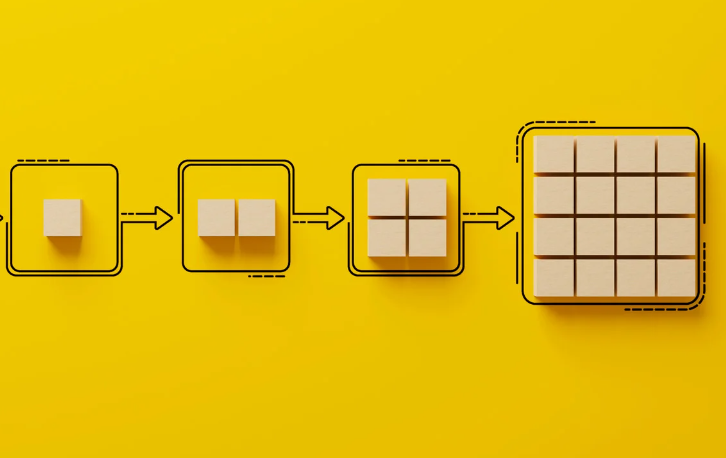Understanding the Different Types of Proposals: Which One Do You Need?
Learn about various proposal types and determine which is best for your needs. This guide covers business, project, and other proposal formats.
Tired of nonsense pricing of DocuSign?
Start taking digital signatures with BoloSign and save money.
In the world of business, academia, and various other fields, proposals play a crucial role in presenting ideas, securing funding, and winning projects. However, not all proposals are created equal. Different situations call for different types of proposals, each with its structure, purpose, and audience. This comprehensive guide, inspired by the visual representation of various proposal formats, will help you determine which type is best suited for your specific needs.
The Importance of Choosing the Right Proposal Format
Before diving into the different types of proposals, it's essential to understand why selecting the appropriate format is crucial. The right proposal format can:
- Increase your chances of success
- Ensure you're addressing the correct audience
- Help you structure your ideas effectively
- Demonstrate your professionalism and understanding of the situation
Now, let's explore the main categories of proposals and their specific use cases.
Types of Proposal Formats

1. Formal Proposals
Formal proposals are detailed, structured documents typically used for complex projects or when dealing with external entities. They are highly organized and follow a strict format.
Key Features:
- Cover letter or memo
- Executive summary
- Table of contents
- List of figures or illustrations
- Introduction
- Detailed discussion of the proposed solution
- Conclusion
- Glossary
- References
- Appendices with supporting documentation
When to Use:
- Large-scale projects
- External clients or stakeholders
- Responding to Request for Proposals (RFPs)
- Government contracts
- Academic research proposals
Example: A consulting firm submitting a proposal to overhaul a company's IT infrastructure would likely use a formal proposal due to the project's complexity and external nature.
2. Informal Proposals
Informal proposals are shorter, less structured documents often used for internal purposes or smaller projects. They are more direct and less formal than their counterparts.
Key Features:
- Brief introduction
- Background information
- Proposed plan
- Staffing requirements
- Budget overview
- Authorization request
When to Use:
- Internal projects or requests
- Smaller-scale initiatives
- Situations where the decision-maker is familiar with the context
- Quick turnaround requests
Example: An employee proposing a new software tool to improve team productivity might use an informal proposal in the form of a memo or email to their manager.
Formal vs. Informal Proposals

3. Internal Proposals
Internal proposals are directed to individuals or groups within your organization. They often require less background information and formality since the audience is familiar with the company context.
Key Features:
- Less formal language
- Focused on internal processes and goals
- May omit certain sections (like company background)
- Often shorter than external proposals
When to Use:
- Suggesting process improvements
- Requesting resources for a project
- Proposing new initiatives within the company
- Seeking approval for internal changes
Example: A marketing team proposing a new social media strategy to the company's leadership would use an internal proposal.
4. External Proposals
External proposals are sent to individuals or organizations outside your company. They require more detail, polish, and a professional tone to establish credibility and persuade the recipient.
Key Features:
- Formal language and structure
- Comprehensive background information
- Detailed explanation of qualifications and expertise
- Often longer and more detailed than internal proposals
When to Use:
- Bidding on contracts
- Seeking partnerships with other organizations
- Applying for grants or funding
- Pitching services to potential clients
Example: A construction company submitting a proposal to build a new office complex for a client would use an external proposal.
Internal vs. External Proposals

5. Solicited Proposals
Solicited proposals are submitted in response to a specific request, such as a Request for Proposal (RFP), Request for Quotation (RFQ), or Request for Bid (RFB).
Key Features:
- Directly addresses the requirements outlined in the request
- Follows a specific format or guidelines provided by the requester
- Often has a set deadline for submission
When to Use:
- Responding to a formal RFP, RFQ, or RFB
- A client or organization has explicitly asked for a proposal
- Participating in a competitive bidding process
Example: A software development company responding to a government agency's RFP for a new public service application would submit a solicited proposal.
6. Unsolicited Proposals
Unsolicited proposals are initiated by the proposer without a specific request from the recipient. They require more effort to convince the recipient of the need for the proposed solution.
Key Features:
- Must establish the need or problem
- Requires strong persuasive elements
- Often needs to overcome initial skepticism
- May need to educate the recipient about the proposed solution
When to Use:
- You've identified a problem or opportunity the recipient may not be aware of
- You want to proactively offer your services or solutions
- You're trying to create a new market or demand for your product
Example: A renewable energy company proposing a solar panel installation to a business that hasn't explicitly sought such solutions would be submitting an unsolicited proposal.
Solicited vs. Unsolicited Proposals

7. Revised Proposals
Revised proposals are submitted when changes are required in the original proposal. They address feedback or new developments that have arisen since the initial submission.
Key Features:

- Summary of changes from the original proposal
- Reasons for the revisions
- Updated project plan, timeline, and budget
- Address any feedback or concerns from the original proposal
When to Use:
- When the original proposal needs modifications based on feedback
- When new information or developments necessitate changes to the proposal
Example: A construction company revising its proposal for a building project after receiving new regulatory guidelines.
8. Renewal Proposals
Renewal proposals are used to request the continuation of funding or support for an ongoing project. They highlight the project's achievements and justify the need for continued support.
Key Features:

- Summary of the project's accomplishments to date
- Justification for continued funding or support
- Detailed plan for the next phase of the project
- Updated budget and timeline
When to Use:
- When seeking continued funding for a multi-phase project
- When the initial funding period is coming to an end, but the project is ongoing
Example: A non-profit organization seeking renewed funding for a community health initiative that has shown positive results.
Choosing the Right Proposal Type
To determine which type of proposal you need, consider the following factors:
- Audience: Who will be reading your proposal? Internal or external stakeholders?
- Purpose: What are you trying to achieve? Secure funding, win a contract, or propose an internal change?
- Complexity: How detailed does your proposal need to be?
- Request status: Are you responding to a specific request or initiating the proposal yourself?
- Relationship: What's your relationship with the recipient? Is it a new or existing connection?
- Industry norms: Are there specific expectations or standards in your industry for proposals?
By carefully considering these factors, you can select the most appropriate proposal type for your situation, increasing your chances of success.
Tips for Writing Effective Proposals
Regardless of the type of proposal you're writing, here are some general tips to make your proposal more effective:
- Know your audience: Tailor your language, tone, and level of detail to your specific readers.
- Clearly state the problem and solution: Make sure the need for your proposal is evident and your solution is compelling.
- Be concise yet comprehensive: Provide all necessary information without unnecessary fluff.
- Use visuals: Incorporate charts, graphs, or diagrams to illustrate key points.
- Proofread and edit: Ensure your proposal is free of errors and reads smoothly.
- Follow guidelines: If responding to an RFP or grant application, adhere strictly to any provided guidelines.
- Focus on benefits: Emphasize how your proposal will benefit the recipient or solve their problem.
- Include a strong call to action: Clearly state what you want the reader to do next.
BoloSign: Streamlining Your Proposal Process
In today's fast-paced business environment, efficiency and professionalism are key. This is where BoloSign, a comprehensive e-signature platform designed specifically for small businesses, comes into play. With BoloSign, you can streamline the process of signing contracts and documents, making it quicker and more secure.
BoloSign offers a range of features that can significantly enhance your proposal process:
- 500+ Crafted Templates: Save time and ensure consistency with over 500 professionally crafted templates for various business needs, including proposals, contracts, and agreements.

- Team Management: Easily add and manage team members, assign roles, and collaborate efficiently on documents.
- Progress Tracking: Keep track of the signing process with real-time updates, ensuring that you never miss a deadline.
To help you get started, BoloSign offers a 7-day free trial.
This allows you to experience all the features and benefits of the platform without any commitment. By integrating BoloSign into your workflow, you can enhance productivity, improve collaboration, and ensure the legal compliance of your documents.
Conclusion
Choosing the right type of proposal and using tools like BoloSign can make a significant difference in your professional success. By understanding your needs and leveraging the right resources, you can create compelling proposals that win projects, secure funding, and drive your business forward.
FAQs
1. What is the main purpose of a proposal?
The main purpose of a proposal is to persuade the reader to approve, fund, or support a plan, project, or idea by presenting it in a structured and compelling manner.
2. How long should a proposal be?
The length of a proposal can vary depending on its type and purpose. A business proposal might be shorter, while a research proposal could be more detailed. The key is to provide enough information to support your case without overwhelming the reader.
3. What makes a proposal effective?
An effective proposal is clear, concise, and well-structured. It should address the needs of the audience, provide a compelling solution, and include all necessary details like budget, timeline, and evaluation plans.
4. How do I know which type of proposal I need?
Consider your objective and audience. If you're seeking funding for a research project, a research proposal is appropriate. For selling a product or service, a sales proposal would be more suitable. Matching the proposal type to your goal is crucial for success.
Conclusion
Understanding the different types of proposals and knowing which one to use in various situations is crucial for success in business, academia, and many other fields. By carefully considering your audience, purpose, and context, you can choose the most appropriate proposal type and structure your ideas effectively.
Remember that while these categories provide a helpful framework, many proposals may combine elements from different types. The key is to remain flexible and adapt your approach to best serve your specific situation and audience.
Whether you're writing a formal external proposal for a major contract, an informal internal proposal for a new company initiative, or a specialized research proposal for academic funding, the principles of clear communication, thorough preparation, and persuasive argumentation remain constant. By mastering the art of proposal writing across various types, you'll be well-equipped to present your ideas convincingly and achieve your goals in any professional or academic context.
And don’t forget, that using tools like BoloSign can significantly streamline your proposal process. With features like unlimited signatures, over 500+ crafted templates, and a 7-day free trial, BoloSign ensures your documents are professionally presented and legally compliant. This can save you time and enhance the overall effectiveness of your proposals, giving you a competitive edge in your professional endeavors.

Paresh Deshmukh
Co-Founder, BoloForms
25 Jul, 2024
Take a Look at Our Featured Articles
These articles will guide you on how to simplify office work, boost your efficiency, and concentrate on expanding your business.


